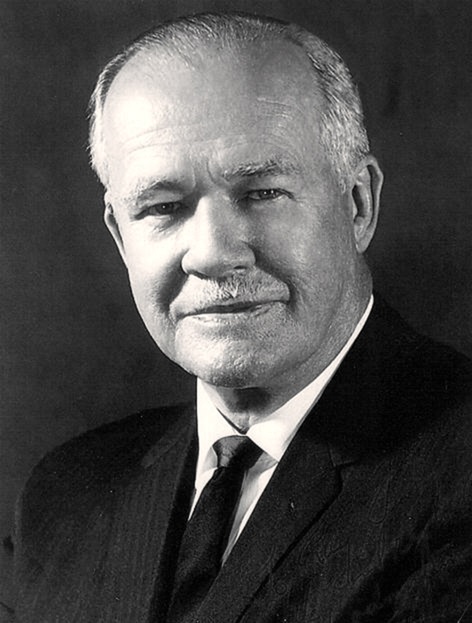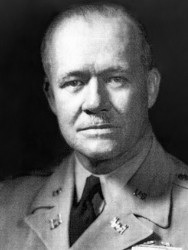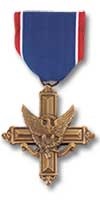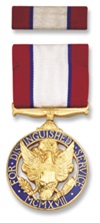“Tatay” Wendell Fertig, Commander 10th Military District
Every war produces unsung heroes. These are the brave men who have risked their lives not only to fight for what is right but also to protect and serve those in need even if it meant their own demise. One of those risk-takers was an American engineer caught between the industrialization of a colonial nation and the harrowing effects of the Second World War. That man was Wendell Fertig.
Wendell Fertig, born in Colorado, U.S.A., moved to the Philippines in 1936 to practice his profession as a civil engineer. This was during the Philippine Commonwealth, wherein American industrialization was starting to become a major factor in the growth of the Philippine economy. Fertig’s expertise in the civil engineering field, during those times, helped fuel some of the successful works and projects in the Philippines initiated by private US corporations and supported by the American government. His success in the Philippines as a private civil engineer was eventfully cut short when the Japanese government decided to show its strength in the early months of 1941.
Being a colony of the United States during those years, the Philippine island was viewed as a major blockade to the success of the Japanese Empire’s plan for Asian domination. As a means to protect the Philippines from an impending Japanese attack or a possible invasion, the United States government ordered the creation of a Philippine Armed Forces composed of American military personnel and Filipinos which in time became known as the United States Armed Forces in the Far East or simply called, USAFFE.
Engr. Fertig was currently enjoying his time off in Manila in 1941 (he was then involved in a project in Samar) when he was called to serve his country. Being in a reserve corps for the United States Army Engineering, Fertig was enlisted in the US Army Engineering with a rank of Captain (reserve) and was deployed together with a unit of other Army Engineering staff in Bataan. Their mission was to prepare and fortify the Bataan bunkers and battlegrounds against a possible Japanese forces attack. Later in the year, a month before the infamous Pearl Harbor bombings, Fertig was appointed as Chief of the Constructions and was assigned to supervise the constructions of airfields all over the archipelago.
By January 1942, almost all non-combatant US citizens in the Philippines were evacuated by the American government including Fertig’s wife Mary and their two daughters. Promoted to Lieutenant Colonel, Fertig was assigned from his post in Bataan to Mindanao by General Edward P. King to oversee the construction of airfields in the Southern island. When Bataan fell in the hands of the Japanese on April 1942, Lt. Col. Fertig was on his way to the island of Mindanao. During his travel there, he had suffered multiple life threatening experiences including plane crashes, Japanese forces encounters, and even deadly tropical diseases.
Lt. Col. Fertig learned about General Wainwright’s surrender on June 1942 placing the whole Philippine archipelago in the hands of the Japanese invaders. Although this event was marked as an official surrender of USAFFE to the Imperial Army of Japan, the Japanese resistance movement in the Philippines was only starting to intensify its actions. These rogue guerilla forces are led by ex-US Army combatants, ex-POWs, Filipino tribe heads, and other local leaders.
Inspired by the rising guerilla movement particularly in Mindanao, Lt. Col. Fertig began to organize his own ‘guerilla force’ to continue the fight for Philippine liberation. His main goal was to unite all the guerilla units in the Mindanao area as one cohesive force. He believes that this will keep the Japanese invaders from claiming the island of Mindanao, now that Luzon and almost 90 percent of the Visayas region have surrendered, until a much stronger Allied forces arrives to liberate the whole nation.
To gain respect amongst the tribal leaders and ex-US army personnel heading these guerilla groups in Mindanao, Lt. Col. Fertig promoted himself to Brigadier General and was also forced to grow a moustache and beard to appear more ‘elderly’. This imposing image, created by Fertig, gave him the leverage to control and unite almost all the guerilla groups in the area thereby protecting the whole Mindanao from a possible Japanese take-over.
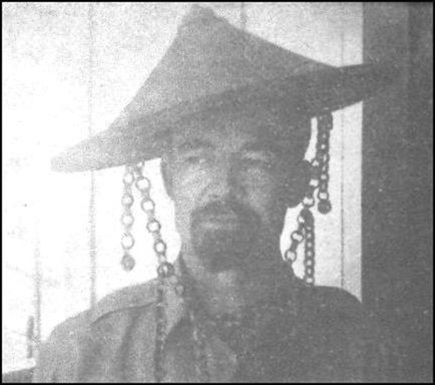
The Fertig-led guerilla forces became one of the most distinguished and most innovative Allied combatants.
The Fertig-led guerilla forces became one of the most distinguished and most innovative (thanks to Fertig’s knowledge in engineering) Allied combatants during this time, a time where the main US Armed Forces have retreated from the Japanese Imperial Army in the Philippines. Fertig and his men was the last line of communication to the Philippines for General Douglas MacArthur and the US Army’s General HQ. Although MacArthur was enraged when he learned about Fertig’s self-promotion to Brigadier General, he didn’t halt the military, food, medical, and equipment supplies from being sent to Fertig’s forces. General MacArthur still believes the importance of Fertig and his guerilla army to the cause of the Allied fight for Philippine liberation. He later awarded Fertig to full Colonel Rank on August 1943 in recognition to his bravery and heroism defending the area of Mindanao.
After the liberation of the Philippine archipelago in 1945, Col. Wendell Fertig returned to the United States and served as an ROTC officer in a school in Colorado. This was a humble post considering the deeds he had done and the sufferings he had endured for the service of the Filipino freedom fighters in Mindanao. He was later awarded by the US Army with the Distinguished Service Medal for his war time efforts in the Philippine archipelago.
Many have criticized the US Army for not giving Col. Fertig its highest military honor, the Medal of Honor. Critics have blamed it to General Douglas MacArthur and his ranking officers, saying that the General and his men downplayed Col. Fertig’s military services in Mindanao to claim for their own the merits of Col. Fertig’s dedication to the resistance movement in Mindanao.
In the 50’s, Col. Fertig worked in the Psychological Warfare Department in Pentagon during the Korean War primarily because of his expertise in the ‘guerilla warfare’. He was respected by the US Special Forces and was one of the brains behind the formation of the Army Special Warfare School which trains elite US Special Forces personnel. He retired from the US military service and returned to private life, managing a mining company in his native home of Colorado until his death on March 24, 1975.
Although his military and personal activities where primarily based in the United States, Col. Fertig, accompanied by his wife Mary, returned to Mindanao in June 1958 for a scheduled business venture. What was supposed to be a simple business trip became a tribute to the man who gave hope to the thousands of Filipinos in Mindanao during the last major war. As the ship that carries Fertig and his wife approaches the pier of Cagayan de Oro, thousands of well wishers from all walks of life greeted the war hero, raising a huge banner which said;
“:Welcome the Indomitable Patriot Who Have Lessened Human Suffering on Mindanao”
Col. Wendell Fertig, the Mindanaoans respectfully call ‘Tatay’ (eng trans. Father) has finally returned home.
Wendell W. Fertig
Date of birth: December 16, 1900
Date of death: March 24, 1975
Place of Birth: Colorado, La Junta
Home of record: Golden Colorado
Isolated in the Philippine Islands after the American surrender, Wendell Fertig “promoted himself” to Brigadier General and assumed command of the scattered and disorganized guerilla forces. He worked closely with Naval Commander Charles “Chick” Parsons, who supplied the guerillas via submarine, to maintain an organized resistance in direct communication with General MacArthur. After the war he served as Special Forces Plans Officer in the Office of the Chief of Psychological Warfare with Headquarters U.S. Army in Washington, D.C., from July 1951 to June 1952. He next served as Deputy Chief of Psychological Warfare from June 1952 to August 1953, and during this time helped establish the Army’s Psychological Warfare Center at Fort Bragg, North Carolina, which later became the John F. Kennedy Special Warfare Center and School.
AWARDS AND CITATIONS
The President of the United States of America, authorized by Act of Congress July 9, 1918, takes pleasure in presenting the Distinguished Service Cross to Colonel (Corps of Engineers) Wendell W. Fertig (ASN: 0-254976), United States Army, for extraordinary heroism in connection with military operations against an armed enemy while Commanding the Mindanao-Visayan Force (Philippine Guerillas), in action against enemy forces from 8 May 1943 to 6 August 1943, in the Philippine Islands. Refusing to surrender when the major defense forces were overcome, Colonel Fertig assumed command of scattered forces continuing resistance on the island of Mindanao. He effectively organized many dispersed elements throughout the island, held much strong enemy forces continuously at bay, and denied to them some of the resources of their country. He improvised tactics for effective warfare with limited means, and ingenious methods for supplying his men and their families. He persisted in this enterprise, although a large price was set on his head, and he was of necessity in constant proximity to the enemy. His courage and resourcefulness enabled him to avoid capture, to inspire in the people of Mindanao a will to resist, and to furnish the United States Command with information of great military value.
General Orders: Headquarters, U.S. Army Forces in the Far East, General Orders No. 47 (August 18, 1943)
Action Date: May 8 – August 6, 1943
Service: Army
Rank: Colonel
Division: Mindanao-Visayan Force
The President of the United States of America, authorized by Act of Congress, July 9, 1918, takes pleasure in presenting the Army Distinguished Service Medal to Colonel (Corps of Engineers) Wendell W. Fertig (ASN: 0-254976), United States Army, for exceptionally meritorious and distinguished services to the Government of the United States, in a duty of great responsibility as commander of the Mindanao-Visayan Force (Philippine Guerrillas) at Mindanao, Philippine Islands, from 16 September 1942 to 25 March 1945. When the surrender of United States Forces in the Philippines left the civilian population, United States, and Philippine Army personnel in a state of chaos, Colonel Fertig accepted the tremendous responsibility of organizing both civil and military resistance in Mindanao. Although confronted with almost insurmountable difficulties, he organized a well disciplined and highly effective fighting force of 25,000 men which confined the foe, vastly superior numerically, to certain heavily fortified areas. He developed an espionage system, coastal watching stations, and vast radio communications of 58 stations scattered throughout the island, many of which were in heavily garrisoned areas. Gaining contact with General Headquarters in Australia, he transmitted vital intelligence on enemy ground, sea, and air activities, and one of his reports made possible the decisive Japanese defeat in the Naval Battle of the Eastern Philippines. Colonel Fertig was responsible for the construction of havens for distressed American planes, pilots and crew. Denying the enemy access to the greater part of the island and its resources, his military activities paved the way for the virtually unopposed landing of United States Forces with a minimum of casualties. Constantly engaged with vastly superior enemy forces, he engendered Filipino faith and confidence in their ultimate deliverance, instilled in them the will to resist, and united them in the cause of freedom. By his outstanding courage, tireless determination, and brilliant leadership, Colonel Fertig made an inestimable contribution to the liberation of the Philippine Islands.
General Orders: War Department, General Orders No. 46 (May 23, 1946)
Action Date: September 16, 1942 – March 25, 1945
Service: Army
Rank: Colonel
Company: Commander
Division: Mindanao-Visayan Force

